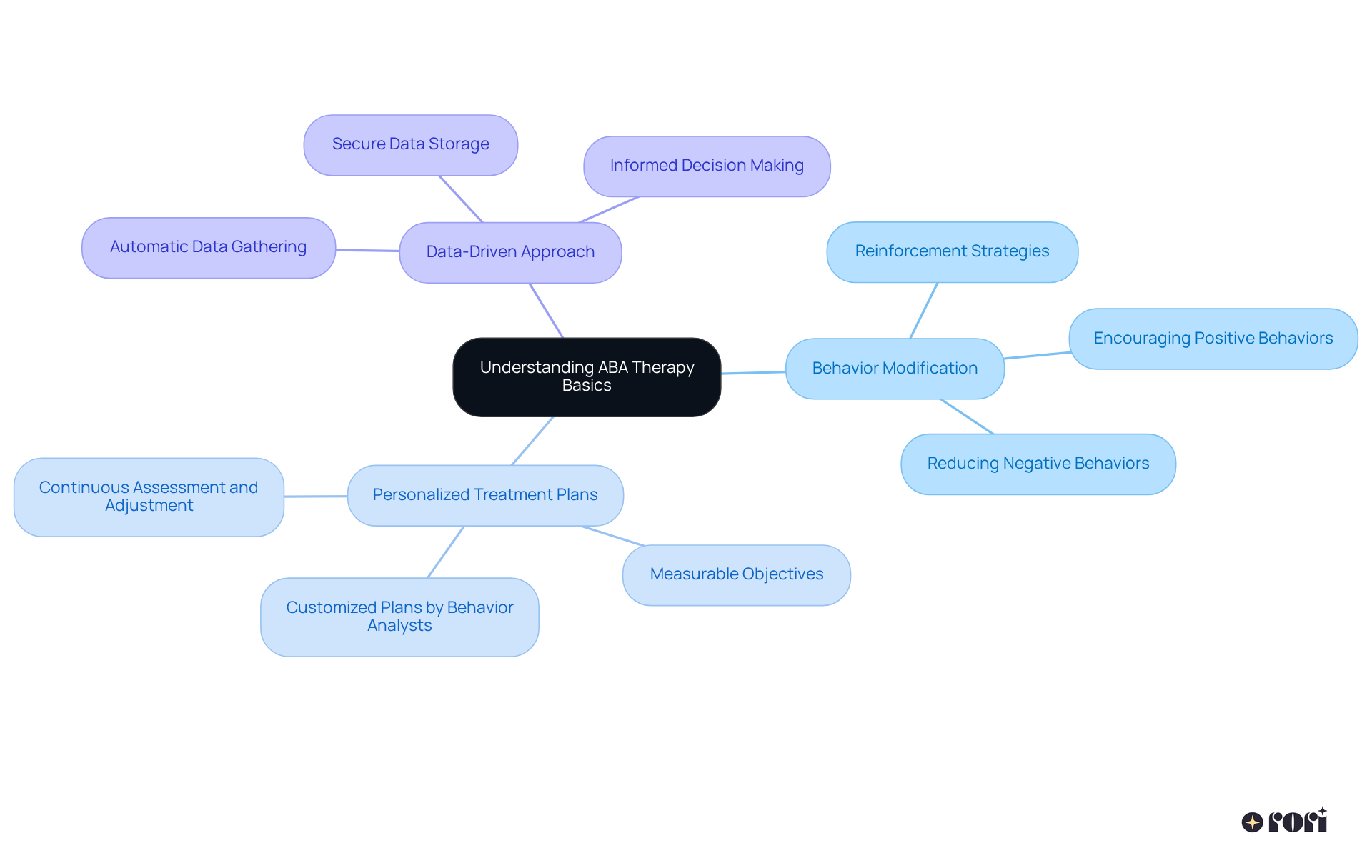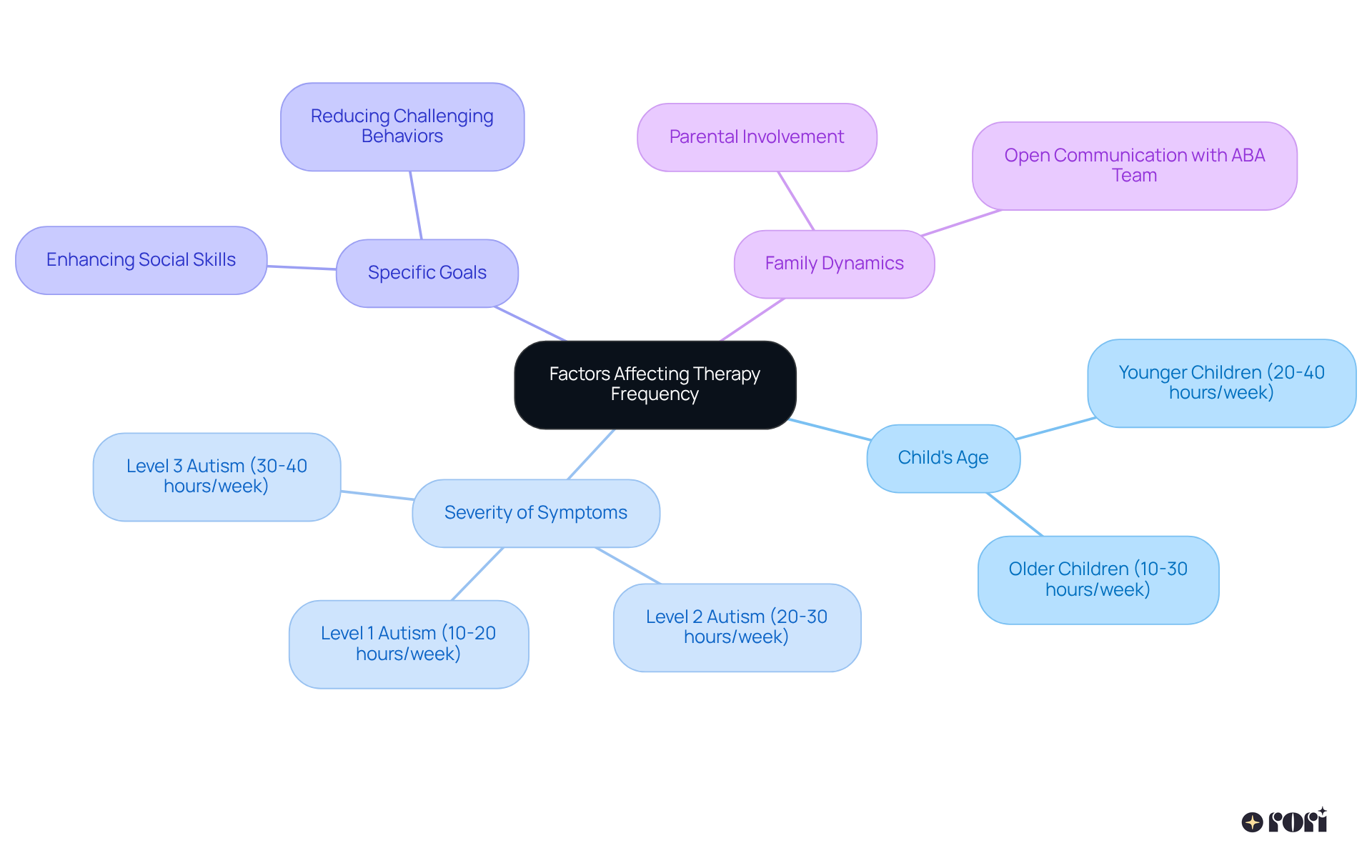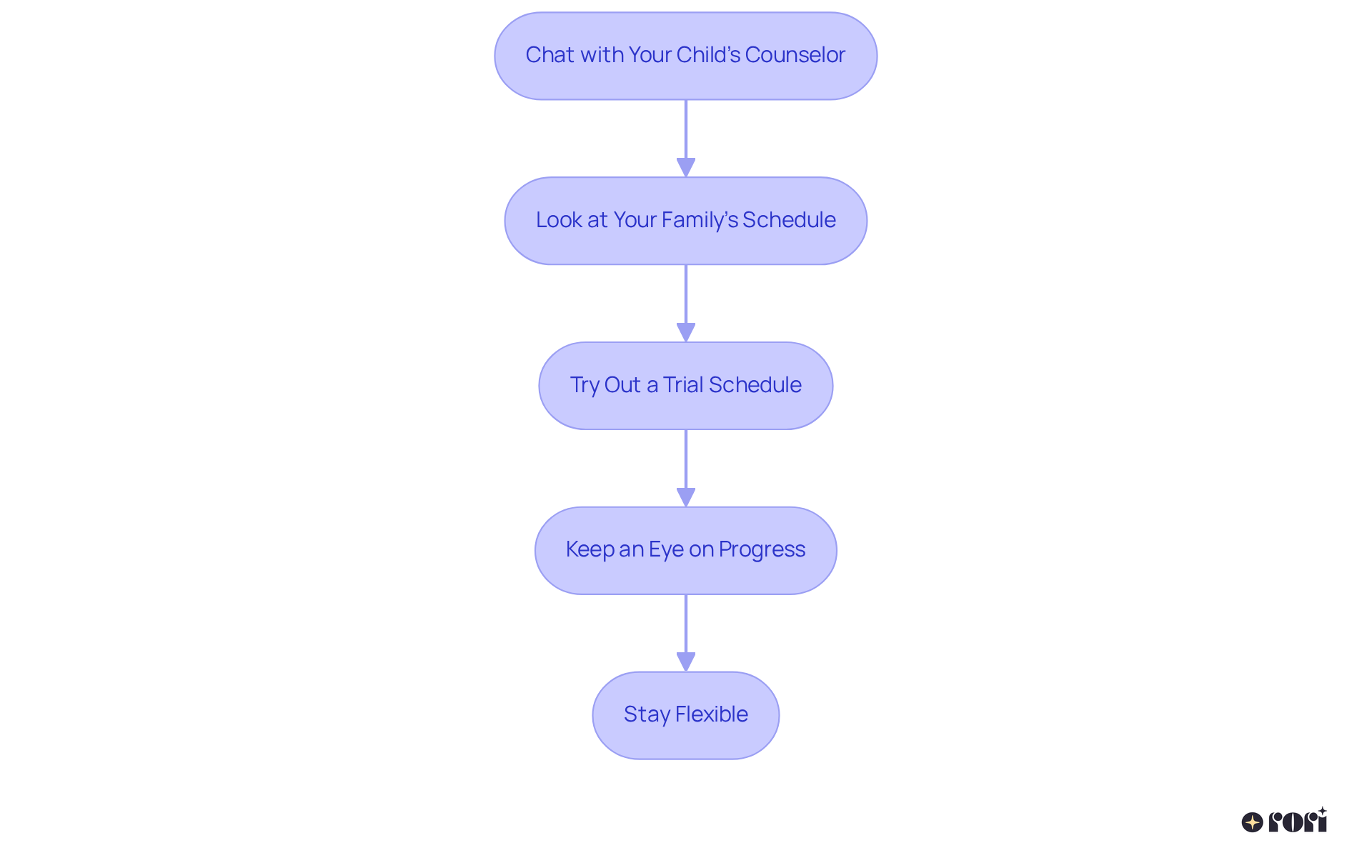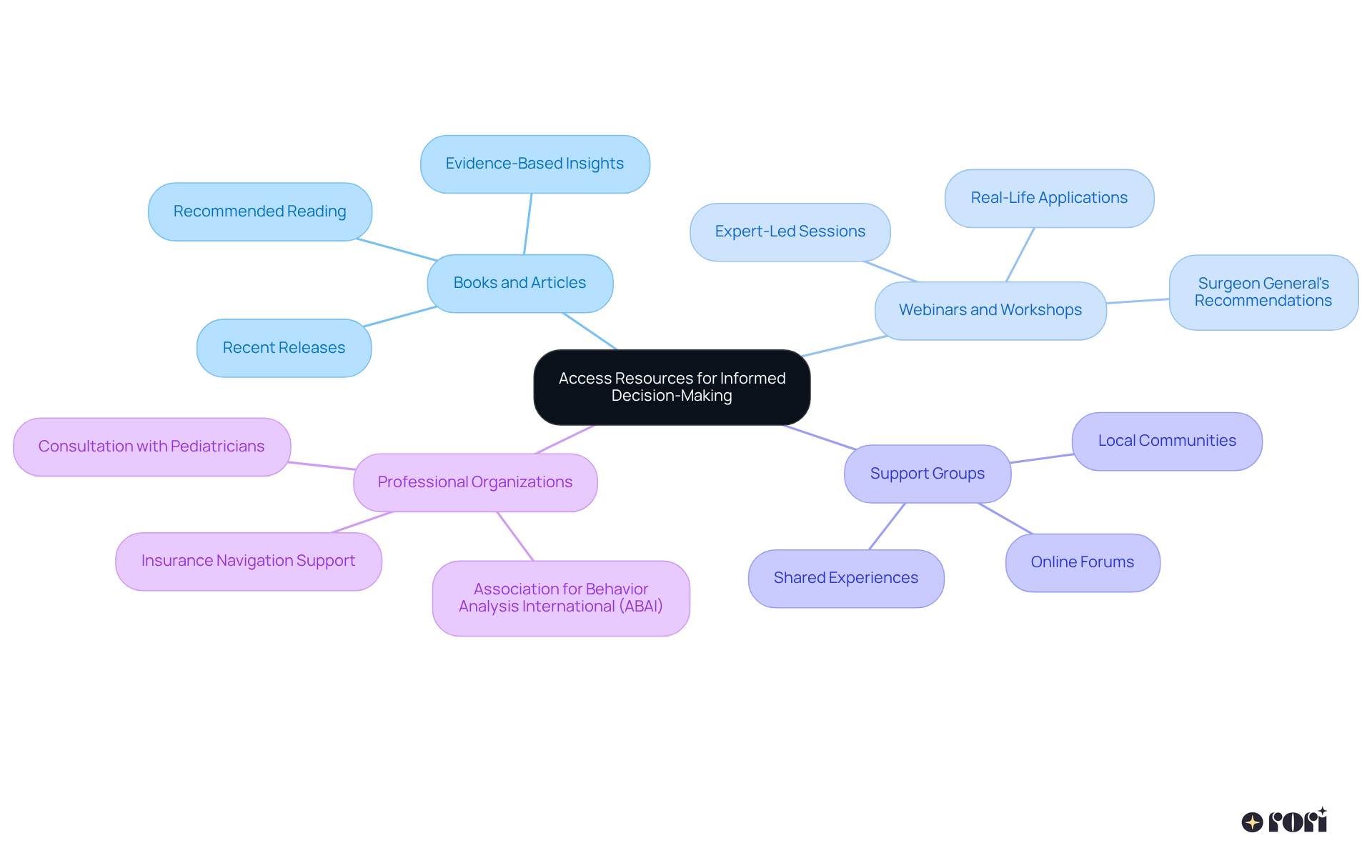When it comes to ABA therapy, the frequency can really depend on a few important factors. Think about your child's age, the severity of their autism symptoms, the specific goals of therapy, and even the dynamics within your family. By understanding these elements, you can craft a personalized treatment plan that truly meets your child's unique needs. This tailored approach can help ensure the best developmental outcomes for them. Let’s explore this together!
Navigating the complexities of autism treatment can feel overwhelming for parents, but understanding the intricacies of Applied Behavior Analysis (ABA) therapy can be a real game-changer! This scientifically validated approach not only focuses on enhancing specific behaviors and skills but also highlights the importance of customizing therapy frequency to meet your child’s unique needs.
With so many factors influencing how often children should receive ABA therapy—from their age to specific treatment goals—it’s natural to wonder: how can you determine the best schedule for your child? This guide is here to help unravel those complexities, offering insights and actionable steps. Together, we’ll make informed decisions that can significantly impact your child’s development. Let’s explore this journey together!
Applied Behavior Analysis (ABA) therapy is a scientifically validated method that helps enhance specific behaviors and skills in individuals with autism. It’s all about understanding how behavior works, how the environment influences it, and how learning takes place. Let’s break down some key components of ABA:
By understanding these fundamentals, parents can truly appreciate how often ABA therapy treatment intervals are significant in achieving the best results for their children. It’s all about working together to make a positive difference! Let’s explore this journey together!

Several factors significantly influence how often children receive ABA therapy sessions, and it's important to consider them thoughtfully:
Child's Age: Younger children, especially during critical developmental stages, often thrive with more frequent sessions. Research shows that early intensive ABA intervention is recommended at 20 to 40 hours per week. This approach can lead to better long-term outcomes, which is something every parent hopes for!
Severity of Symptoms: The intensity of a child's autism symptoms plays a vital role in determining treatment frequency. For instance, kids with Level 1 Autism usually need around 10-20 hours per week, while those with Level 2 might require 20-30 hours. Meanwhile, children with Level 3 Autism often need 30-40 hours each week. This customized strategy ensures that treatment effectively tackles each child's unique challenges.
Specific Goals: The aims of therapy, like enhancing social skills or reducing challenging behaviors, will also determine how often ABA therapy is provided. Kids facing more significant behavioral difficulties may benefit from a more intensive approach, leading to an increased number of suggested support hours. It’s all about meeting your child where they are!
Family Dynamics: Finally, the availability and willingness of parents to participate in counseling can influence scheduling. Open communication between the ABA team and families is crucial for incorporating intervention strategies into daily life. This collaboration allows for a balanced approach that fits in with school, extracurricular activities, and family time.
By thoughtfully assessing these factors, parents can create a customized treatment plan that aligns with their child's needs and encourages optimal development. Let’s explore this together and make the best choices for your little one!

To create an effective therapy schedule for your child, let’s consider a few steps together:
Chat with Your Child's Counselor: Start by having a friendly conversation about your child's unique needs and treatment goals. Therapists can provide personalized suggestions on how often ABA therapy sessions should occur, which is key to maximizing the benefits.
Look at Your Family's Schedule: Think about your family's commitments, like school and extracurricular activities. Finding the right times for therapy is crucial to maintain consistency and minimize any disruptions.
Try Out a Trial Schedule: Implement a proposed schedule for a few weeks. This trial period will give you a chance to see how your child responds to how often ABA therapy is conducted, allowing you to make informed adjustments based on their engagement and progress.
Keep an Eye on Progress: Regularly check in on your child's development and any behavioral changes. Keeping track of their progress will help you figure out if the current schedule is working or if it needs tweaking.
Stay Flexible: Be open to adjusting the schedule as your child's needs evolve. Ongoing feedback from therapists and your observations of your child's behavior will guide necessary changes to enhance their therapy experience.
By following these steps, you can create a structured yet flexible treatment schedule that truly supports your child's growth and development in ABA. Let’s explore this together! We're here to help you every step of the way!

To help you make informed decisions about how often to pursue ABA therapy, let’s explore some helpful resources together:
By tapping into these resources, you can stay informed and actively engage in your child's therapy journey. This kind of involvement not only paves the way for better outcomes but also equips you with the knowledge and skills needed to support your child's behavioral goals. Let’s explore this together!

Understanding how often your child should engage in ABA therapy is so important for parents looking to support their child’s development. The right amount of therapy can really make a difference, ensuring that each child gets the personalized help they need to thrive. By considering factors like age, severity of symptoms, specific therapy goals, and family dynamics, you can make informed decisions about how frequently to pursue ABA therapy.
One key insight is the importance of tailoring the therapy schedule to your child’s unique needs. For instance, younger children might benefit from more intensive sessions, while the specific challenges your child faces will guide the ideal frequency. Keeping an open line of communication with therapists, trying out different schedules, and continuously monitoring progress are essential steps for creating an effective and flexible therapy plan. Plus, accessing resources like literature, workshops, and support groups can empower you with the knowledge needed to navigate this journey.
Ultimately, engaging with ABA therapy is a collaborative effort that calls for thoughtful planning and adaptability. By actively participating in this process and utilizing the resources available, you can foster an environment that encourages your child's growth and development. Embracing this commitment not only enhances the effectiveness of ABA therapy but also builds a supportive framework for children with autism to flourish in their everyday lives. Let’s explore this journey together, and remember, we’re here to help you every step of the way!
What is Applied Behavior Analysis (ABA) therapy?
ABA therapy is a scientifically validated method that enhances specific behaviors and skills in individuals with autism by understanding how behavior works, how the environment influences it, and how learning occurs.
How does ABA therapy modify behavior?
ABA uses reinforcement strategies to encourage positive behaviors while gently reducing negative ones, effectively nudging individuals toward desired behaviors.
Are treatment plans in ABA therapy personalized?
Yes, each young person receives a customized treatment plan crafted by a qualified behavior analyst, tailored to their unique needs, strengths, and challenges, with measurable objectives and evidence-informed strategies.
How is progress tracked in ABA therapy?
Progress is tracked through automatic data gathering during clinical sessions, allowing the clinical team to monitor the child's progress without interrupting treatment.
What happens to the data collected during ABA therapy?
All data is securely stored, anonymized, and deleted after analysis to help make informed decisions and adjustments to the treatment plan as needed.
Why are treatment intervals significant in ABA therapy?
Understanding the fundamentals of ABA therapy helps parents appreciate how important treatment intervals are in achieving the best results for their children, emphasizing the collaborative effort to make a positive difference.